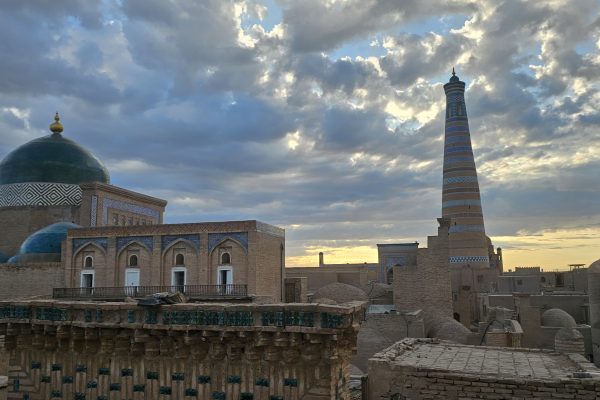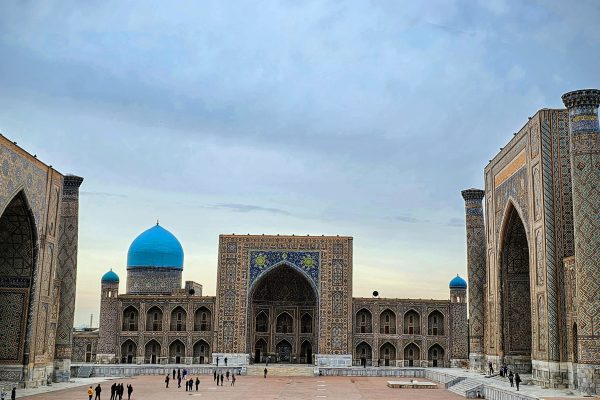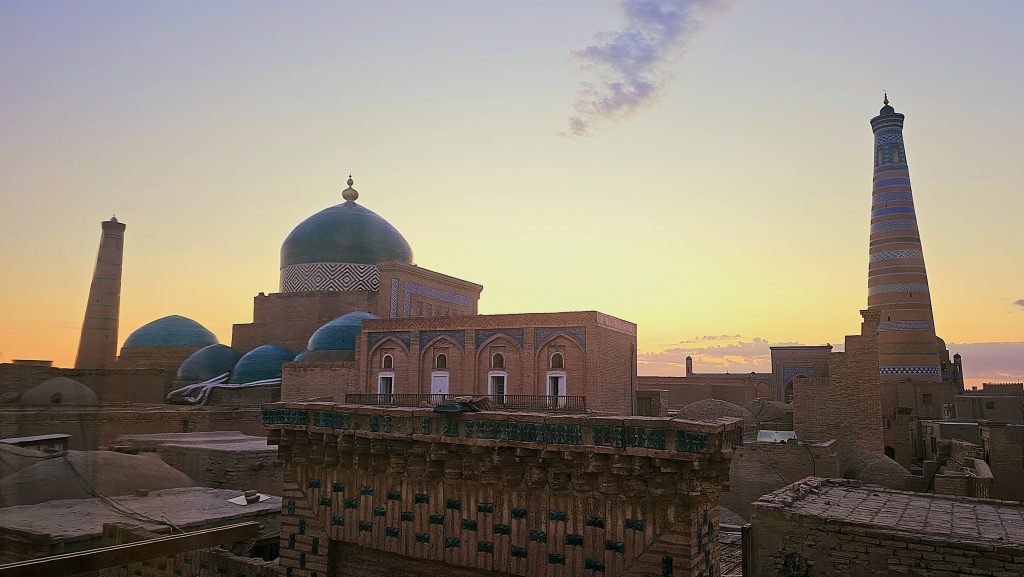
Khiva, a 2500 years old city, is a UNESCO heritage site. I booked a stay in a lovely guest house in Itchan Kala. Itchan Kala is a unique area, surrounded by walled fortresses with distinct Islamic architecture. Stepping into Itchan Kala feels like stepping into a world where time stands still. Itchan Kala is a living, breathing museum of Khorezm culture, where the past and present coexist in a delightful harmony.
Getting lost in Itchan Kala is half the fun – every corner reveals a new surprise. As I navigated the winding paths through the ancient walled city, I discovered hidden restaurants with old-world European decor, or a roof top cafe offering sweeping views of the city’s storybook skyline. I stumbled upon craftsmen at work, local women weaving silk carpets and carpenters crafting intuitive designs.
My favourite part of my days there is watching the colourful Khorezmian dance performance in Itchan Kala. I simply enjoy sitting on tarmac with a bunch of local children around me, watching the humorous and imitative dance. What amazes me is that despite it being the holy month of Ramadan, life in Uzbekistan even though being a Muslim country simply doesn’t stop. Entertainment carries on. Tourists could still enjoy meals and even alcoholic beverages in their restaurants. Everyone still serves with a smile.
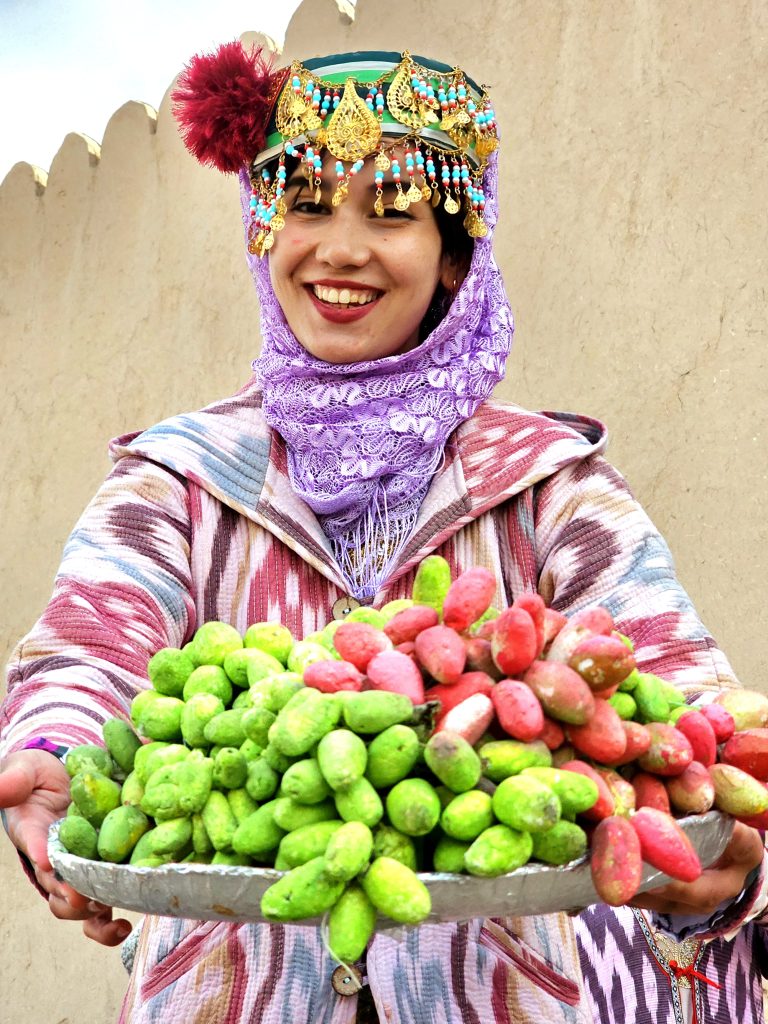
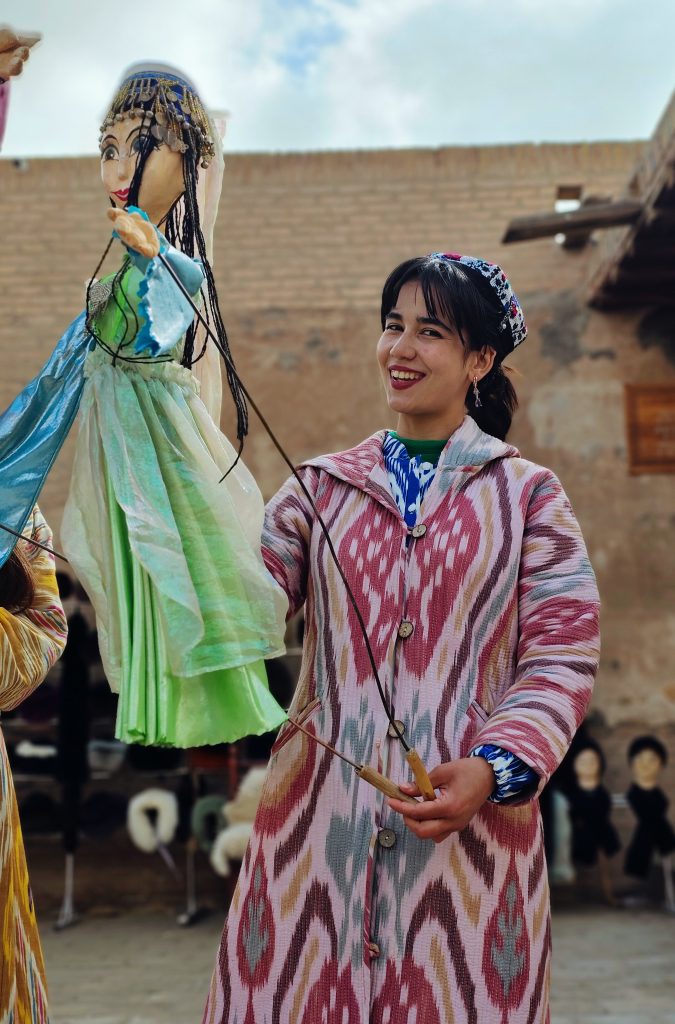
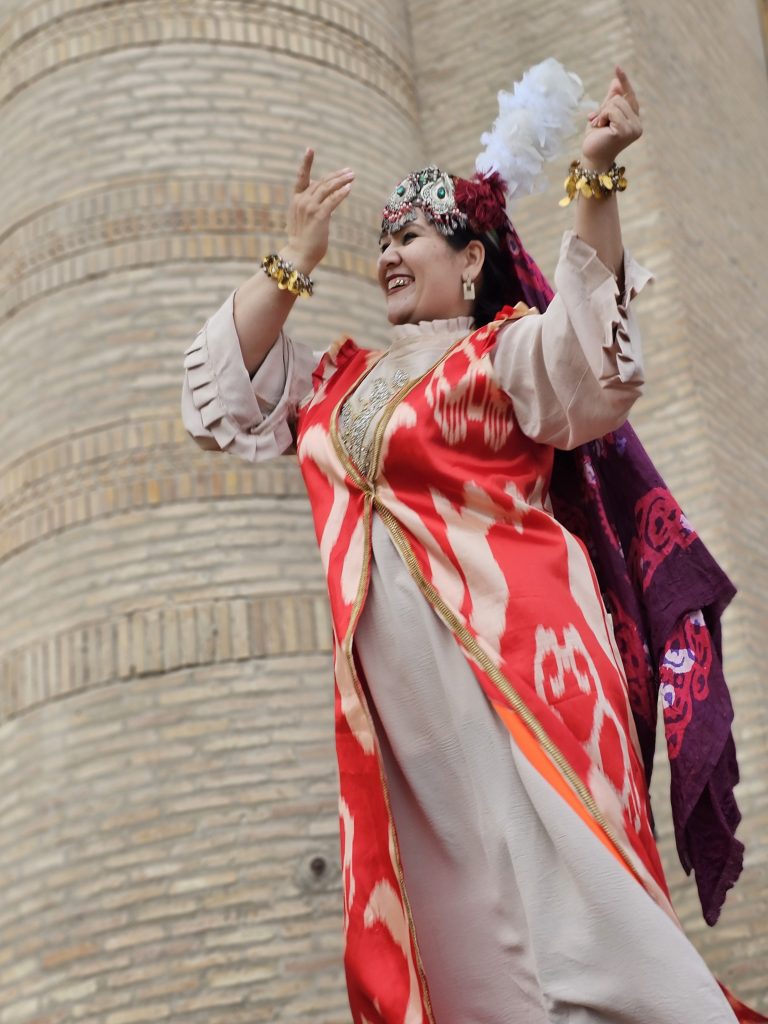
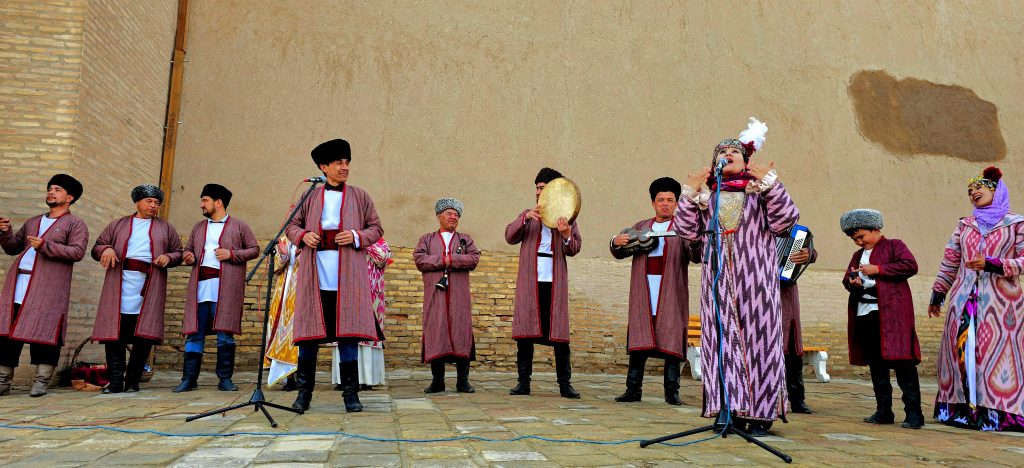
The highlights of Khiva
Kalta Minor Minaret
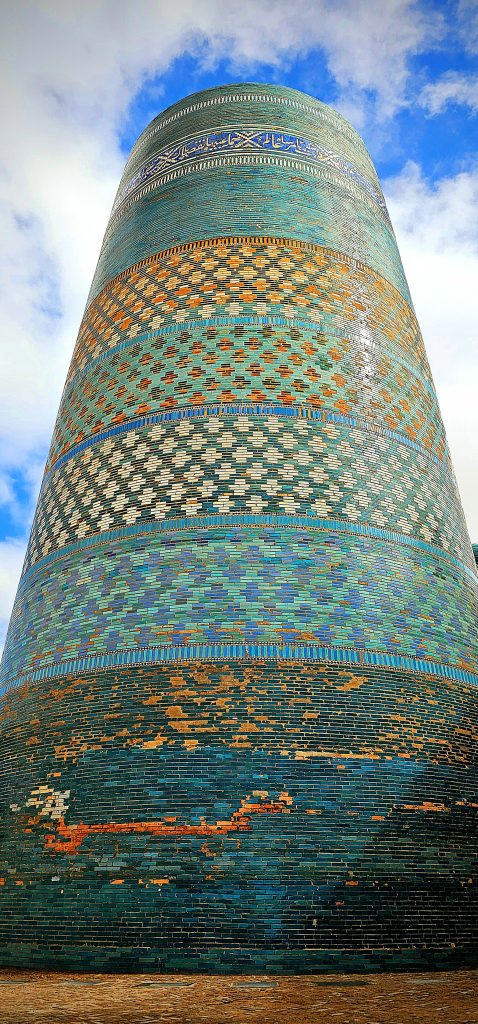
One of the incredible sights in Itchan Kala is the Kalta Minor, a short, stocky blue tower, a symbol of the city.The glistening turquoise tiles are mesmerising in the morning sunlight. Legend has it that this minaret was meant to be the tallest tower in the Islamic world, but its construction halted abruptly when the Khiva ruler, Muhammad Amin Khan was killed.
There are various souvenir stalls next to it and in the evening the area around the minaret becomes one of night-time hustle & bustle.
Mohammed Amin Madrassa
Just beside Kalta Minor stands the grand Mohammad Amin Madrassa. This building, once a school for Islamic education, is now a hotel. It is situated adjacent to the main shopping street that connects the East Gate to the West Gate. This minaret is the beautifully tiled one in hues of greens and blues. The Madrassa now has a new life as a hotel but still provides some wonderful photo opportunities. As with many of the buildings in Khiva, it is beautifully lit up at night.
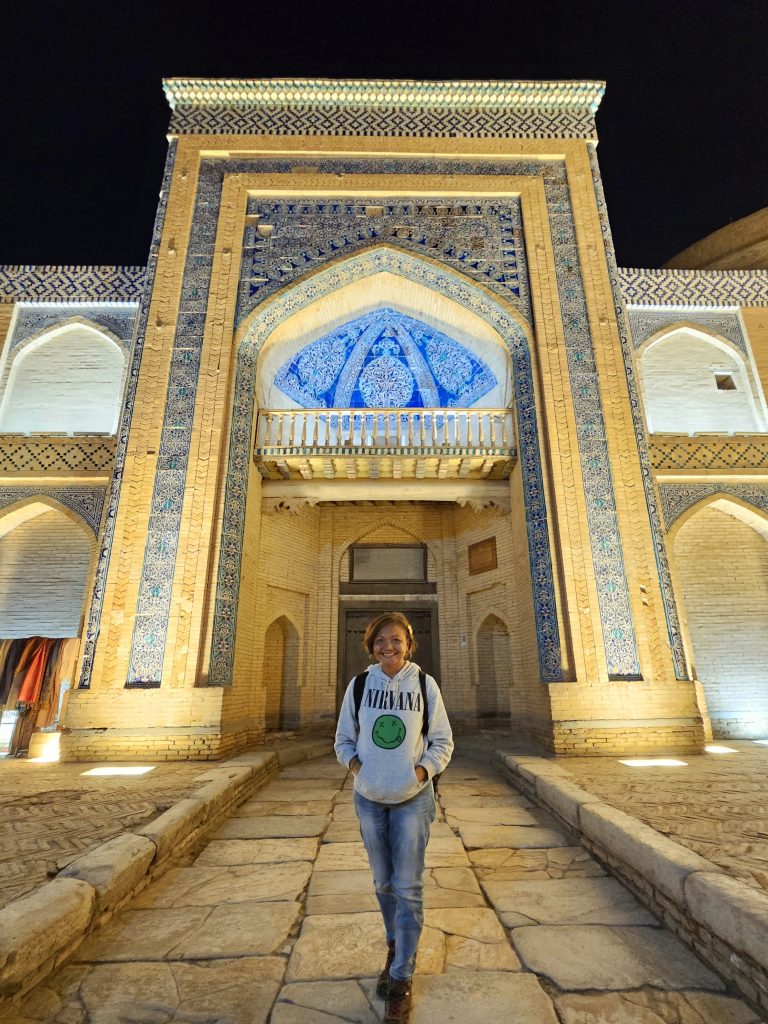
Kuhna Ark
Just beside Kalta Minor stands the grand Mohammad Amin Madrassa. This building, once a school for Islamic education, is now a hotel. It is situated adjacent to the main shopping street that connects the East Gate to the West Gate. This minaret is the beautifully tiled one in hues of greens and blues. The Madrassa now has a new life as a hotel but still provides some wonderful photo opportunities. As with many of the buildings in Khiva, it is beautifully lit up at night.
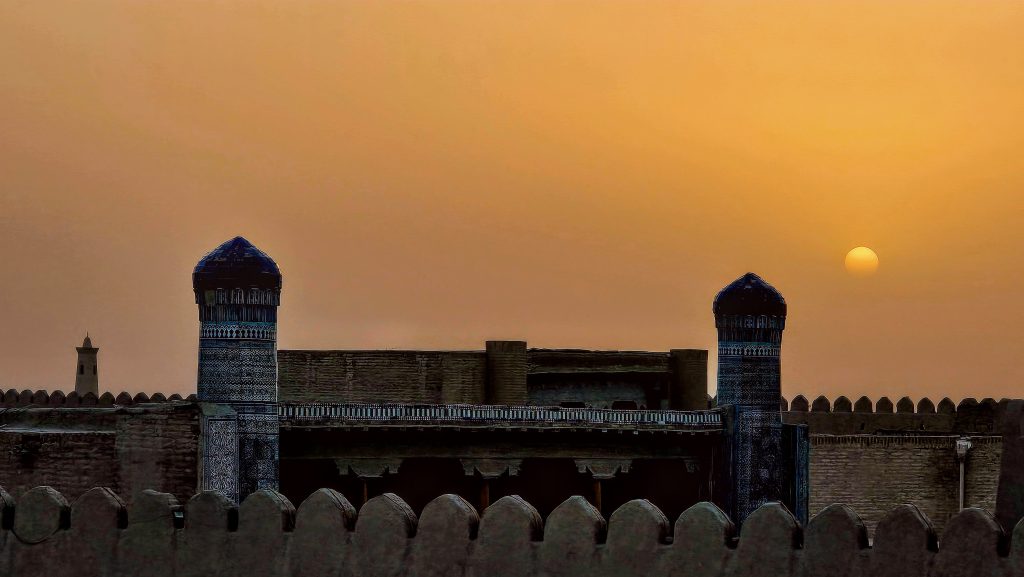
Juma Mosque
A visit to the Juma Mosque was one of my highlights in Khiva. This mosque is unlike any I’ve seen before. Instead of the usual domes and minarets, it features a flat roof supported by over 200 wooden pillars, each one with its design and carving.The light filtered through the small gaps in the ceiling, casting the intricate patterns of light and shadow on the floor. There’s something about Juma Mosque that I couldn’t describe. I spent a good hour here, just admiring the wooden poles and enjoying the serenity of its surroundings.
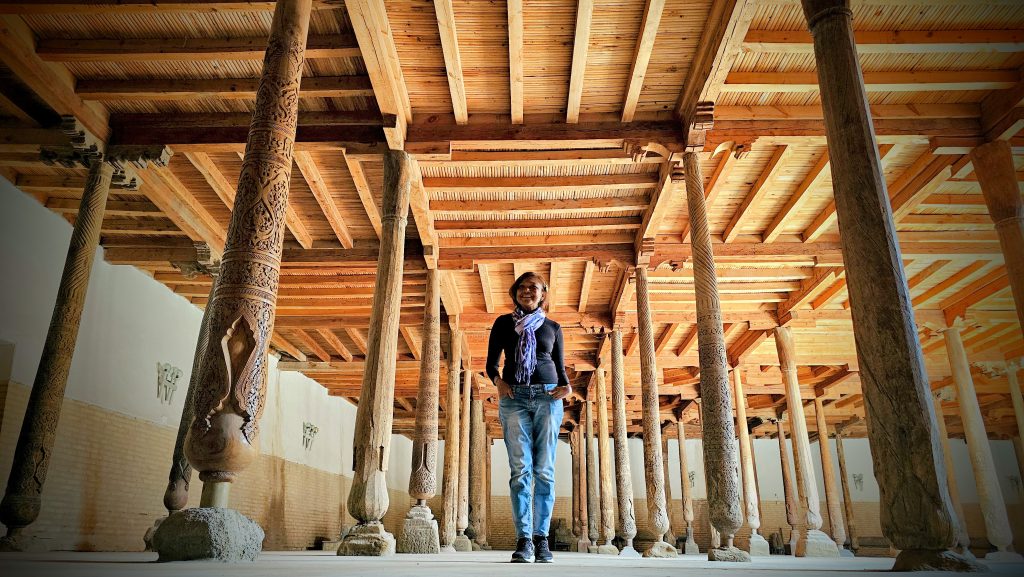
Pahlavan Mahmoud Mausoleum
One of the most sacred sites at Itchan Kala is the Pahlavan Mahmoud Mausoleum, a serene and deeply spiritual place dedicated to Khiva’s patron saint. Pahlavan Mahmoud was a famous poet, a well known craftsman and an undefeated fighter. As I entered the mausoleum, the air was filled with a sense of peace with the gentle recitation of Quranic echoing through the hall. It was here that I witnessed a scene that left a lasting impression.
A group of Italian tourists tried to enter the mausoleum with their shoes on, which were covered with plastic sleeves. They seemed unaware, or perhaps uncaring, that this is a sacred place, where the locals were reading the Quran and paying respect to Pahlavan Mahmoud. The Imam, who was conducting a Quran reading with a group of locals, stopped and kindly asked them to remove their shoes. The tourists however argued that their shoes were covered, so it should be fine. This isn’t just about keeping the floor clean, it is about honouring respected by the locals. This incident was a stark reminder that as visitors, we must be mindful and respectful of the customs and traditions that hold deep meaning for others.
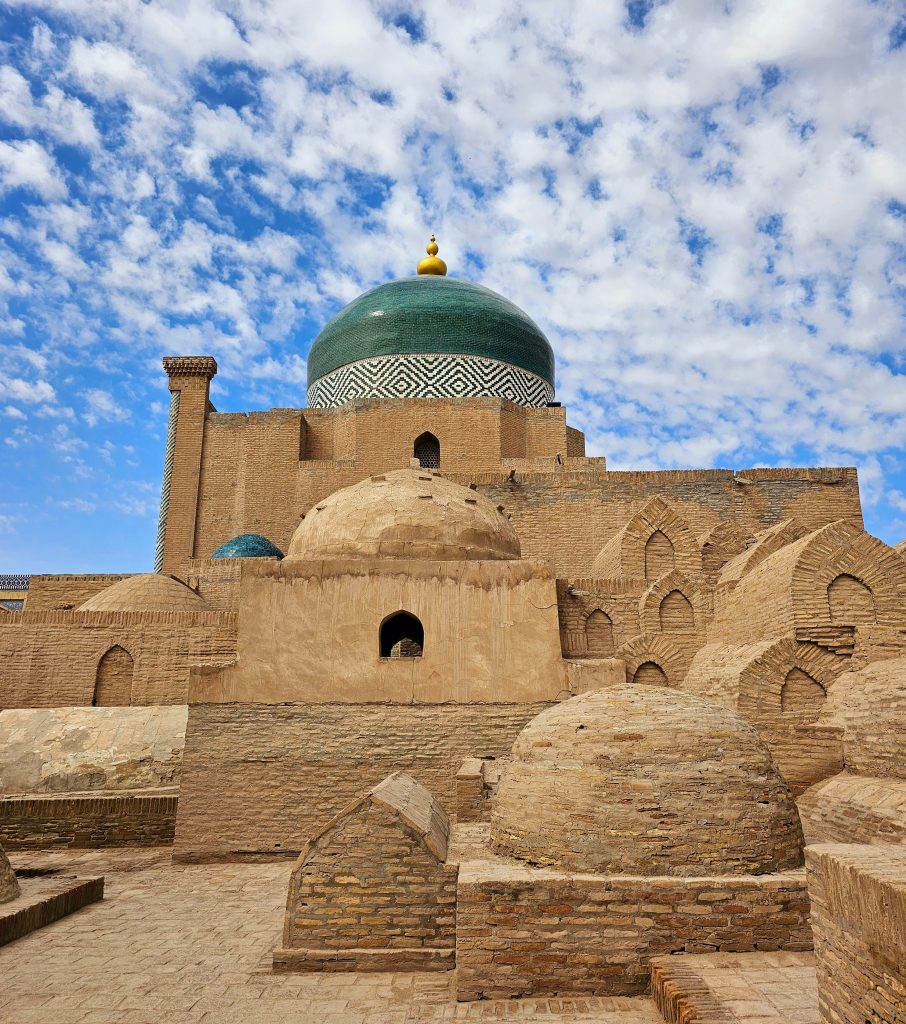
The Bazaar
No visit to Itchan Kala would be complete without exploring its bustling bazaars. Here, the spirit of Khiva comes to life. The stalls are brimming with colourful textiles, handcrafted ceramics and beautifully woven rugs. The vendors greet visitors with a welcome smile and are often curious about where you’re from.
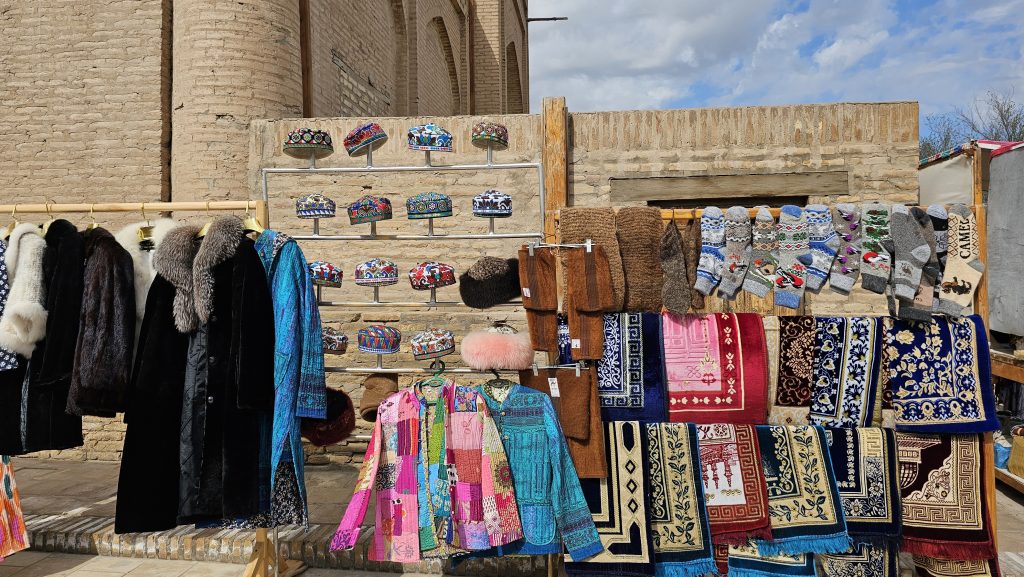
Khiva Captures My Heart
Khiva honestly is my favourite part of Uzbekistan. This pocket size ancient city with its walled fortresses, hidden gems and deeply respected culture has a way of embedding itself in my soul. It is a place where every alleyway tells a story.
So if you find yourself in Khiva, take the time to wander, explore and get gloriously lost in this beautiful maze. You’ll never know what treasures you might find.
Check out my video of Khiva here
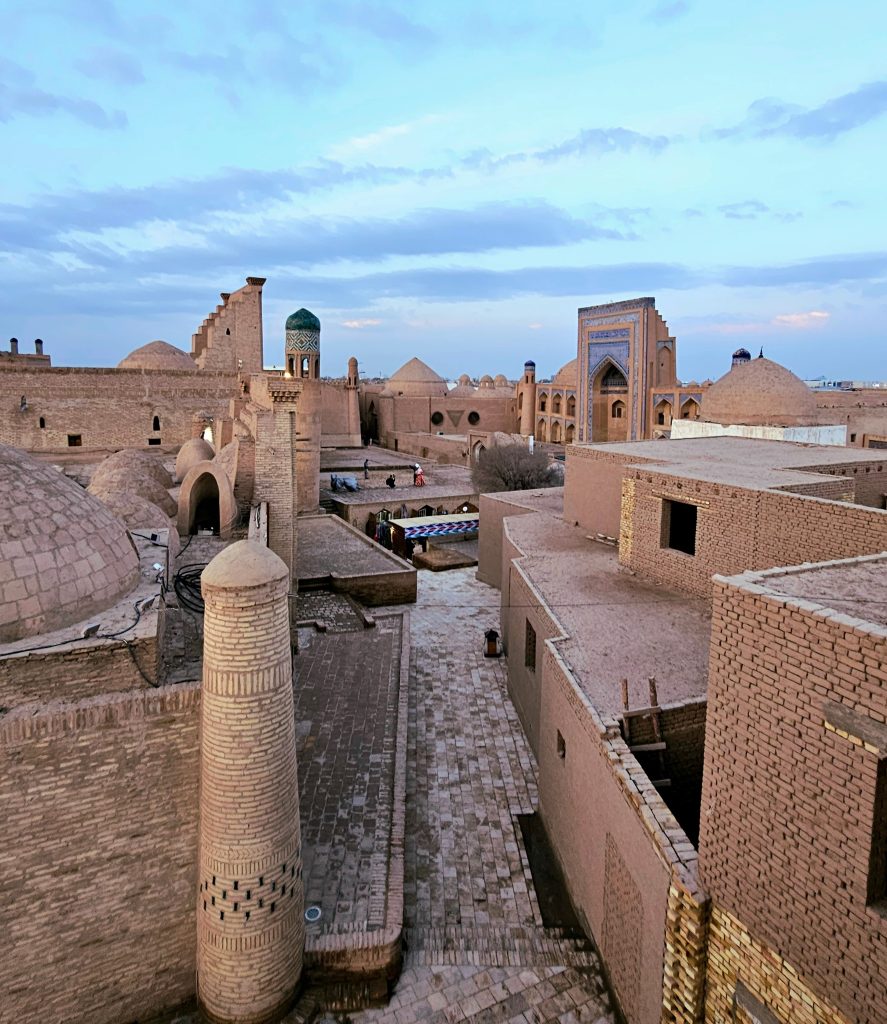
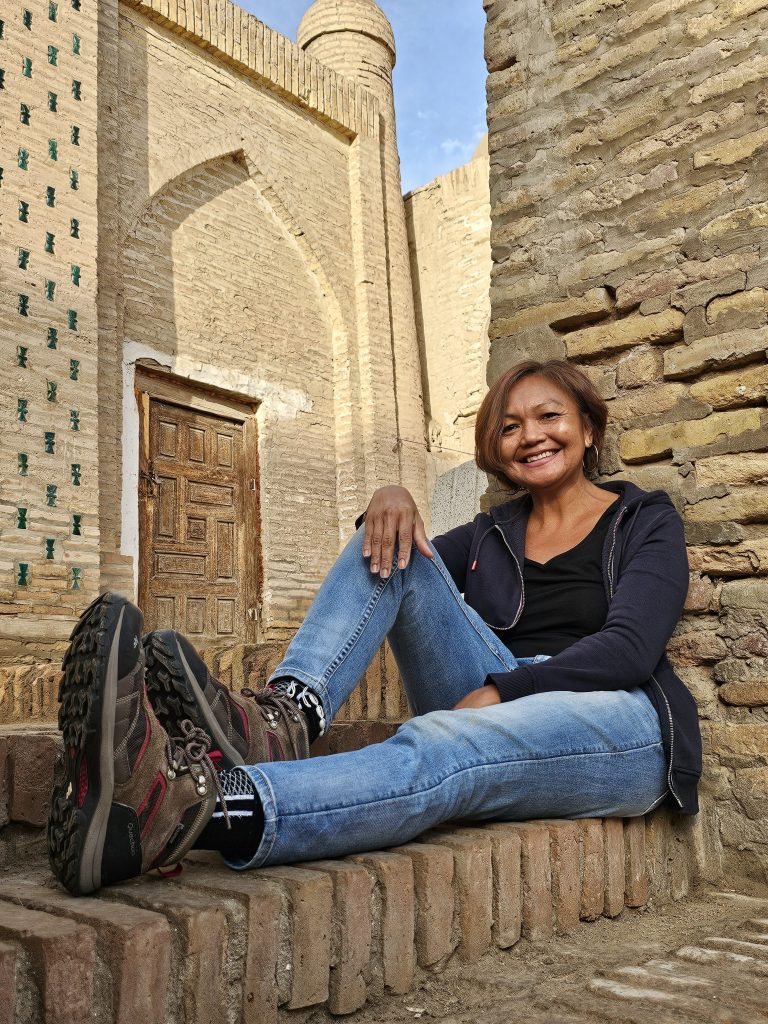
How To Get To Khiva
Trains: Khiva is connected to Tashkent, Bukhara and Samarkand by train. It takes 16 hours to travel to Khiva on a train from Tashkent, 10 hours from Samarkand and 8 hours from Bukhara. You can find the time table and booking site here: Uzbekistan Railway
Plane: If you’re short of time or prefer a quicker journey, flying to Khiva is a good option. That’s what I did. From Tashkent, you can catch a domestic flight to Urgench, the nearest airport to Khiva. Once you land in Urgench, Khiva is just a 30 minute drive away.
